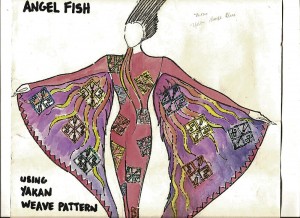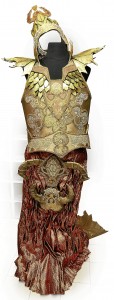 Doing period costumes is nothing new to Eric Pineda. As a veteran costume designer, educator and avid researcher, Pineda always makes sure he gets the right look and feel for a specific era. But how does he redo something that has already been done with aplomb?
Doing period costumes is nothing new to Eric Pineda. As a veteran costume designer, educator and avid researcher, Pineda always makes sure he gets the right look and feel for a specific era. But how does he redo something that has already been done with aplomb?
Such was the challenge posed by Pineda’s most recent project, the latest and biggest Philippine staging of the popular musical “The Little Mermaid.”
Produced by Atlantis Productions and directed by Bobby Garcia and Chari Arespacochaga, the musical stars Erik Santos (Prince Eric) and Rachel Ann Go (Ariel, the mermaid). It will premiere on Nov. 18 and run until Dec. 11 at the Meralco Theater.
Ever since Garcia offered the job to him a little over a year ago, Pineda has had to walk a tightrope so as not to disappoint the guys at Disney (owner of the franchise) as well as countless fans of “The Little Mermaid,” particularly children.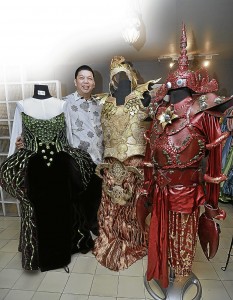
“That’s how long the process took,” he shared one early evening in his shop in Quezon City. “Everything, down to the last detail, had to be approved by Disney.”
Apart from being based on one of Hans Christian Andersen’s classic fairytales, “The Little Mermaid” was turned into a hit animated feature film-cum-musical in the late ’80s before crossing over to Broadway. Such is its broad and timeless appeal.
Pledging himself
Then, Pineda, being a creative person, also had to please himself. This is one project, he said, that isn’t offered to you every day. But how do you reinvent or even tweak a classic without alienating its fans and exceeding the production’s modest budget?
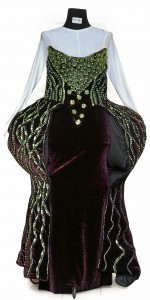 Pineda declined to go on record, but he figured the amount he and collaborators Liz and Benny Batoctoy—two of the country’s leading production and special-effects designers—had to work around with what was peanuts compared to Tatiana Noginova’s First World budget.
Pineda declined to go on record, but he figured the amount he and collaborators Liz and Benny Batoctoy—two of the country’s leading production and special-effects designers—had to work around with what was peanuts compared to Tatiana Noginova’s First World budget.
“Tatiana is the Russian costume designer responsible for the original Broadway production,” said Pineda. “And to be fair to her, she did a splendid job.”
Pineda credited Garcia for solving half his problem. It was Garcia who asked permission from Disney to tweak the undersea creatures’ costumes by giving it an Asian spin.
The landlubbers’ costumes, both people and animals, were to remain faithful to the era, which was somewhere between late Napoleonic and early Victorian Europe.
“If I were just tasked to recreate whatever was already done on Broadway, what am I here for? Is there anything new left for me to do?” he said.
Two conditions
Disney gave the idea the green light on two conditions: Sebastian and company, despite the wardrobe reinvention, should remain identifiable; and the costumes, no matter how daring or outlandish, should be age-appropriate.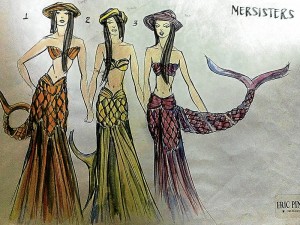
“For instance, I had to redo Rachel Ann’s bra top by giving her chest more coverage,” said Pineda. “Disney would never allow its Ariel to look like a bombshell.”
When he buckled down to work, he kept in mind Garcia’s general directive: Every piece should appeal to kids, the musical’s core audience.
“Even the villain Ursula [Jinky Llmanzares], Ariel’s nemesis, has to have a playful side,” he said. “Of all the costumes I did, Ursula’s proved to be the hardest. She has to come across as evil, but with a touch of whimsy to appeal to kids.”
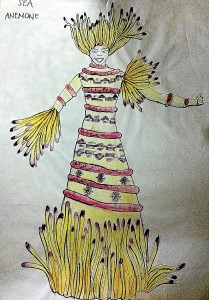 Since he couldn’t do away with the witch-turned-giant-octopus’ iconic tentacles, which are part of her character, Pineda played with her flame-like blond hair by giving it a more Harajuku vibe.
Since he couldn’t do away with the witch-turned-giant-octopus’ iconic tentacles, which are part of her character, Pineda played with her flame-like blond hair by giving it a more Harajuku vibe.
Despite the restrictions, Pineda had a great deal of fun tapping into his imagination inspired by images from his trips to Vietnam, Cambodia, Thailand and Indonesia, particularly Bali.
One of his more inspired pieces is that of Sebastian (OJ Mariano), Ariel’s crab sidekick. The only element in common between the new and old costume is the color red, in keeping with Disney’s requirement.
While the original looks like a character straight out of a Caribbean Mardi Gras, Pineda’s version brims with Thai touches —from the chada headdress to the diaper pants.
Creative license
Pineda pushed his creative license to the limits by giving Ariel a pair of pared-down terno sleeves (his homage to the Philippines) no doubt, that resemble giant seashells.
Flotsam and Jetsam, two of Ursula’s most trusted minions, wear stretch costumes that are equal parts pintado and Cirque du Soleil.
Instead of looking like some Nordic god from the halls of Valhalla, King Triton (Calvin Millado), Ariel’s father, looks more like Balinese royalty in Pineda’s hands.
“I was inspired by the idea when I saw a performance of ‘Rama and Sita’ in Bali,” he said. “To allow Calvin to move freely, we made use of cheap and lightweight lysofoam to fashion Triton’s Balinese-inspired body armor and headdress. That’s the magic of theater production.”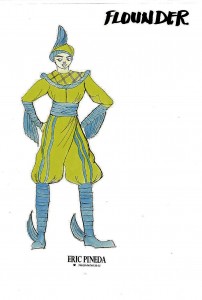
His budget may be limited, but it seems his imagination isn’t. Pineda and his team, composed of graduating design and arts students from College of St. Benilde, where he teaches, scoured Divisoria and other suppliers’ haunts in search of affordable materials. Again, their resourcefulness and ability to improvise proved valuable.
 Lysofoam, for instance, is the same material used for the soles of slippers. Suction cups from plastic bathroom mats ended up as part of the beadwork on Ursula’s stretch velvet violet dress.
Lysofoam, for instance, is the same material used for the soles of slippers. Suction cups from plastic bathroom mats ended up as part of the beadwork on Ursula’s stretch velvet violet dress.
Even tacky mass-produced doilies used as TV covers have found their way on a number of tops and headdresses.
A theater production either sinks or floats based on the combined efforts of people behind it. But musicals, especially one aimed at children, draw more heavily on costumes and production design to carry its message across.
The young jury’s verdict is still out.

